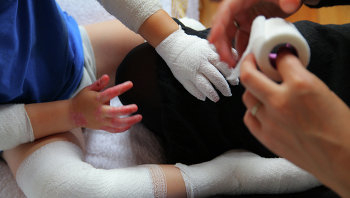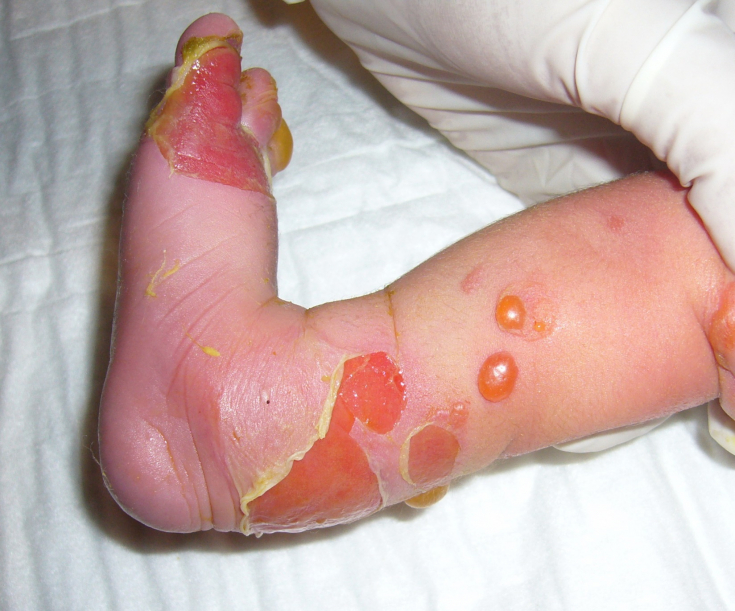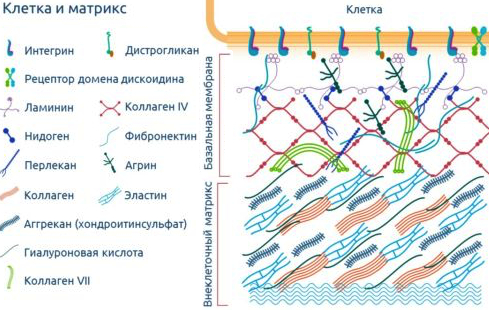Patients with a serious skin disorder known as "butterfly syndrome" or recessive dystrophic epidermolysis bullosa (RDEB) develop blistering of the skin filled with serous or hemorrhagic contents. This is inevitably associated with the occurrence of erosion. Fibrosis, thickening and scarring of the connective tissue, is the main complication of the disease.
Fibrosis can not only lead to the formation of excess connective tissue that limits the functional mobility of the skin, but fibrosis in patients with butterfly syndrome also leads to an aggressive form of skin cancer, which is often fatal.
In the article estet-portal.com you can get acquainted in detail with the latest discoveries in the field of pathogenesis of recessive dystrophic epidermolysis bullosa, which provide hope for the creation of an effective therapy strategy.
"Butterfly Syndrome": what lies behind the attractive name

Epidermolysis bullosa — this is a rare hereditary disease, its main symptom is the formation of blisters and weeping wounds (erosions) on the skin and mucous membranes that occur with minor trauma.
Follow us on Facebook
Clinical manifestations of the disease can vary from localized blisters on the hands and feet to generalized rashes over the entire skin, as well as damage to the mucous membrane of internal organs.
Currently, four main groups of the disease have been identified: simple, intermediate, dystrophic and Kindler's syndrome.
Mutations cause changes in the structure of proteins responsible for adhesion between the layers of the dermis, which leads to the formation of vesicles.
Treatment is a complex task due to the lack of a direct impact on the pathogenesis of the disease, and its main goal is to stop existing skin manifestations and prevent the appearance of new elements.
How does fibrosis develop in patients with Butterfly Syndrome
Researchers have pinpointed exactly how fibrosis develops in patients with Butterfly Syndrome.
The discovery points to a potential treatment for a debilitating complication.
Scientists have suggested that a protein called thrombospondin-1 (TSP1) may be involved in fibrosis. In a previous study, skin cells in patients with butterfly syndrome were found to have more TSP1 than skin cells in healthy individuals. A new study shows that TSP1 attaches to a protein that helps hold skin layers called collagen VII (C7) in skin cells in healthy people.

TSP1 has been shown to bind to collagen VII for the first time in human cells.
How dangerous is Dermatitis herpetiformis Duhring
A consequence of the lack of collagen VII in patients with butterfly syndrome
However, collagen VII is absent in patients with butterfly syndrome. Because people with butterfly syndrome don't have much or no collagen VII, TSP1 is able to attach to another molecule called transforming growth factor-.beta. (TGF.beta.).

TGFβ is a signaling molecule that, when activated, triggers a cascade of molecular signals that culminate in fibrosis.
The researchers further showed that a molecule that prevents TSP1 from activating TGF reduces fibrosis in a tissue model. In addition to this potential therapy, researchers are now reviewing nearly 1,500 FDA-approved molecules to find other treatments.
Thank you for staying with estet-portal.com. Read other interesting articles in the "Dermatology" section. You may be interested in Fragile skin: clinical presentation, diagnosis and treatment of epidermolysis bullosa









Add a comment